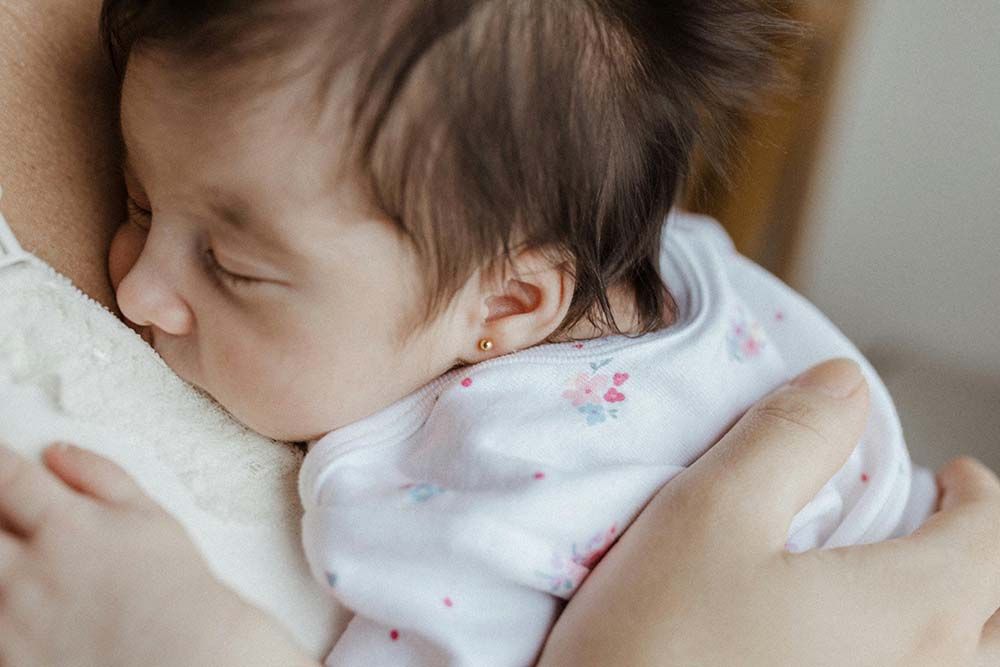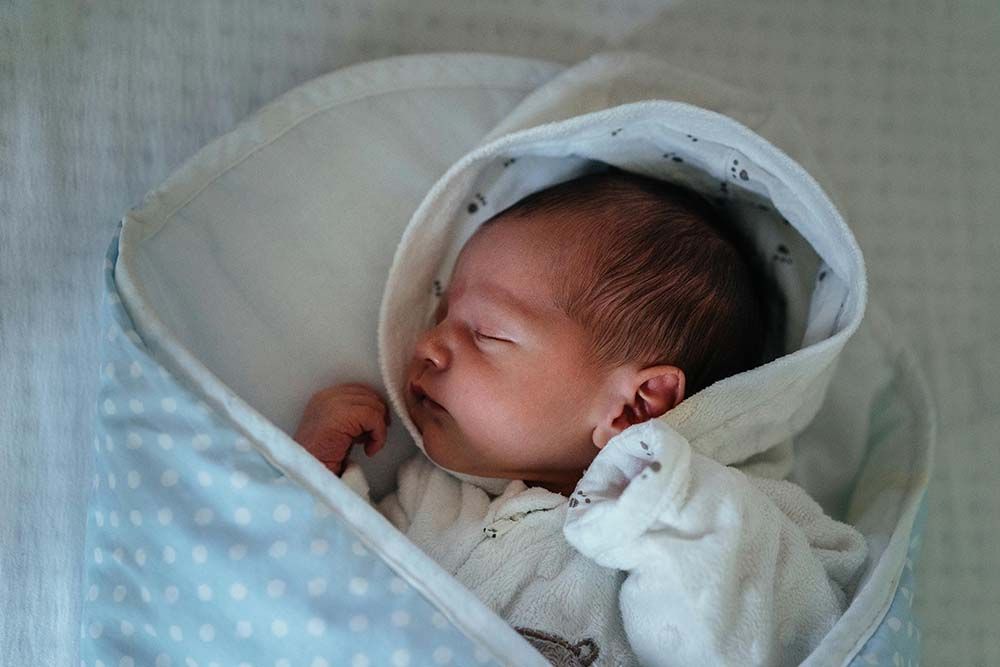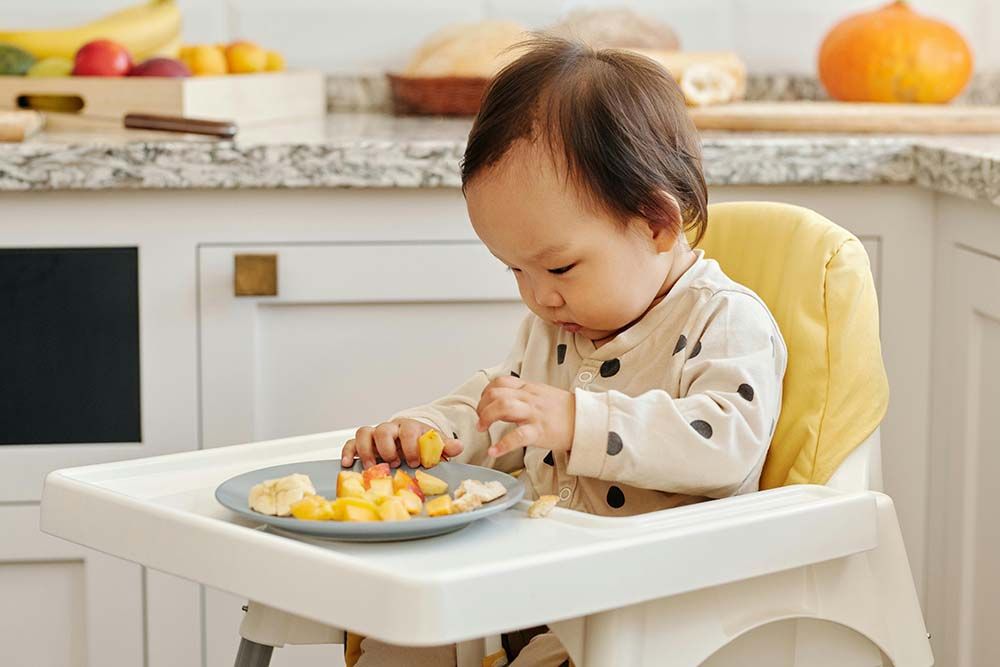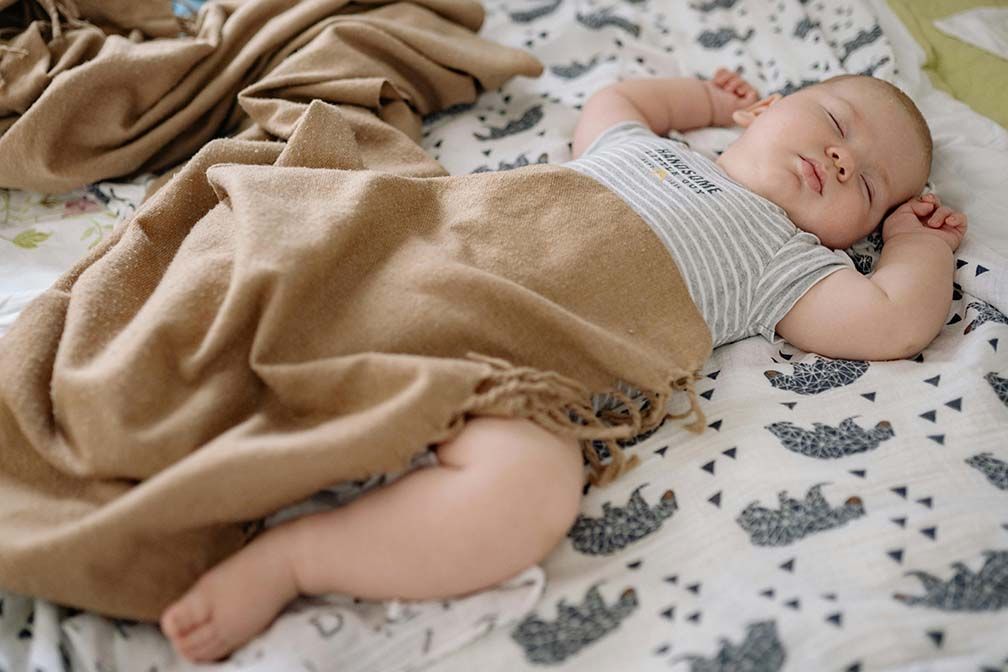

Sleep sacks play an important role in providing a secure sleep environment, making babies safe and comfortable. However, as babies grow and develop, it's necessary to transition from sleep sacks to blankets for the sake of baby's safety and comfort. Actually, babies will show some changes in your their sleep habits, indicating parents that it is time to making shifting. If you don't know when to stop using a sleep sack, read this article for more details about it.
Use a reliable app to track your baby’s important moment
When deciding whether it’s time to move your baby out of a sleep sack, parents may face many questions and uncertainties. Every child is unique, so there’s no fixed answer that works for all families.In this case, keeping tracking your baby's growth will be helpful to make a decision. The Moonycare App is designed for this purpose, which not only allows you to conveniently track your baby’s key activities like feedings, diaper changes, and sleep patterns, but also allows you to record those important developmental moments. With it, you can easily see when your baby has reached a new stage of development, like starting to roll over or stop relying on a sleep sack, helping you make more confident decisions about sleeping arrangements.
IN THIS ARTICLE
When to start using a sleep sack
When to stop using a sleep sack
How to transition from sleep sack to blanket
A Basic Understanding About Sleep Sacks
#1. Definition
Sleep sacks are specially designed for babies, which are a progressive alternative to traditional blankets or quilts. It was developed to ensure babies’ warmth and safety and eliminate the risk of suffocation caused by using loose sheets or blankets. It is actually a wearable blanket, usually without sleeves, allowing babies to wear it directly in their pajamas.
#2. Advantages
1. Safety
Reducing the risk of SIDS: Usually, Sleeping sacks have no small accessories or loose threads, it reduces the risk of babies accidentally eating, getting tangled, or even being covered with mouse and nose, thereby reducing the risk of sudden infant death syndrome (SIDS).
Sense of security: Except for physical safety, sleeping sacks provide babies with a sense of wrapping, similar to a sense of security in the womb, which helps reduce separation anxiety and fall asleep better.
2. Comfort
Thermostatic control: Sleeping sacks can be selected in different thicknesses according to the season and room temperature to maintain a suitable body temperature for babies and avoid overheating or overcooling.
Close fitting design: The sleeping bag fits the baby's body, making them feel comfortable and helping them fall asleep peacefully. Unlike blankets that can be kicked off, using sleep sacks can prevent from night wakings caused by cold.
3. Convenience
Easy to change diapers: Most sleeping bags are designed with zippers or buttons that make it easier and faster to change diapers at night.
Portability: Sleeping bags are easy to carry, providing a consistent sleeping environment for babies whether they are at home or traveling.
Freedom of movement: The sleeping sack design allows babies to move freely without being restricted, which helps with their physical development.
4. More benefits
Easy to clean: Sleeping bags are relatively easy to clean and disinfect, keeping the baby's sleeping environment clean and hygienic.
Multi season use: Sleeping bags come in various thicknesses to meet the needs of different seasons, with high cost-effectiveness for long-term use.
Durability: High quality sleeping bags are usually more durable and can accompany babies' growth.
All in all, if you choose a sleep sack with appropriate design and materials, it will become an indispensable part of your baby’s growth process.
#3. Things Need to Consider When Choosing a Sleep Sack
Size comes to the first. Considering to your babies’ age and weight, choose a suitable sleep sack that won’t too tight or too loose for your baby. Otherwise, the effect will be discount a lot or even generate the opposite effect.
And the fabric of sleep sacks also matters a lot. Make sure that the fabric is soft and breathable, creating a comfortable touch with baby, conducive to your baby to fall asleep smoothly.
Temperature. If the sleep sack you select has the feature to regulate temperature will be better. Keep the baby in a secure temperature, not too hot or too cold. It will be better for baby to experience a restful sleep.
When to Use a Sleep Sack?
There is no standard answer to when to start use a sleep sack for babies. So, sometimes you need to make right decisions as a parent. If you have no idea about it, welcome to read the follow content. Actually, sleep sacks are typically used from birth until the baby reaches a certain age or developmental stage. Here are some guidelines:
- Birth to 6 Months: Ideal for newborns and infants up to six months old. The tight-fitting design of sleep sacks gives baby the feeling when they are in the womb, giving them the sense of familiar and comfortable.
- 6 to 12 Months: The sleeveless design of sleep sacks are useful for older infants at this range who are still learning to roll over and sit up. Thus, rolling over is an important to transition from swaddling to sleep sack, reducing the suffocation risk caused by haphazardly sleep postures and loose coverings.
When to Stop Using a Sleep Sack?
Similar to “when to start using a sleep sack”, this varies from person to person. For the sake of babies’ safety, it is generally recommended that babies use sleep sacks until they can safely manage loose items on the bed, including blankets. Here are also some obvious signs to help you make appropriate decision.
Enhanced mobility: Infants becomes more mobile, such as crawling, standing, and even walking independently.
Deal with blankets safely: Babies can safely handle lightweight but loose blankets, so that they won’t be tangled or their face won’t be covered.
Developmental stage: When a baby grows to a certain age, they will demonstrate the ability to self regulate their body temperature, thus, they don’t have to rely on the warmth offered by sleeping sacks.
Comfort degree: Your baby seems to feel uncomfortable or too hot with the sleeping sack, and they can comfort themselves and fall back asleep without sleeping sacks.
Anyway, safety always the priority. Most babies will stop using sleep sacks until they are 18 months to 2 years old. However, it is variable depending on individual development. Moreover, there are some parents who may permit their babies to use it for a longer time as long as they feel comfortable with sleep sacks.
How to Stop Using a Sleep Sack or Transition from Sleep Sack to Blanket?
If your baby shows the signs to stop using the sleep sack, or the baby is old enough to transition from sleep sack to blanket. You can make preparations to help your baby complete the transition process. But remember that it is a gradual process, which requires patience and careful observation. Here are some suggested steps that can help with a smooth transition:
1. Reduce the frequency of using the sleep sack: Start trying to let babies not use sleeping sacks during daytime naps and observe their reactions.
2. Gradual transition at night: If there is no issue with daytime napping, you can prepare a lightweight, soft and breathable blanket, and try gently covering the baby with the blanket at the beginning of the night while the baby is still sleeping in a sleeping bag. This can help the baby gradually adapt to the feeling of the blanket.
3. Gradually reduce sleeping sack wearing time: When the baby adapts to being covered with blankets for some time at night, the sleeping sack wearing time can be gradually shortened, such as only wearing it in the first half of the night.
4. Complete transition: When the baby is able to adapt to using the blanket throughout the night, they can completely stop using the sleeping sack.
In short, the transition process is gradual and completed under close supervision. At this process, make sure that the blanket won’t cover the baby’s face and cause suffocation, and pay attention to baby’s reaction. If the baby shows any discomfort or resistance, slow down the pace and give more time to allow baby to adapt to new sleep environment. If you have any doubts or encounter difficulties, it is recommended to consult a pediatrician for advice.























